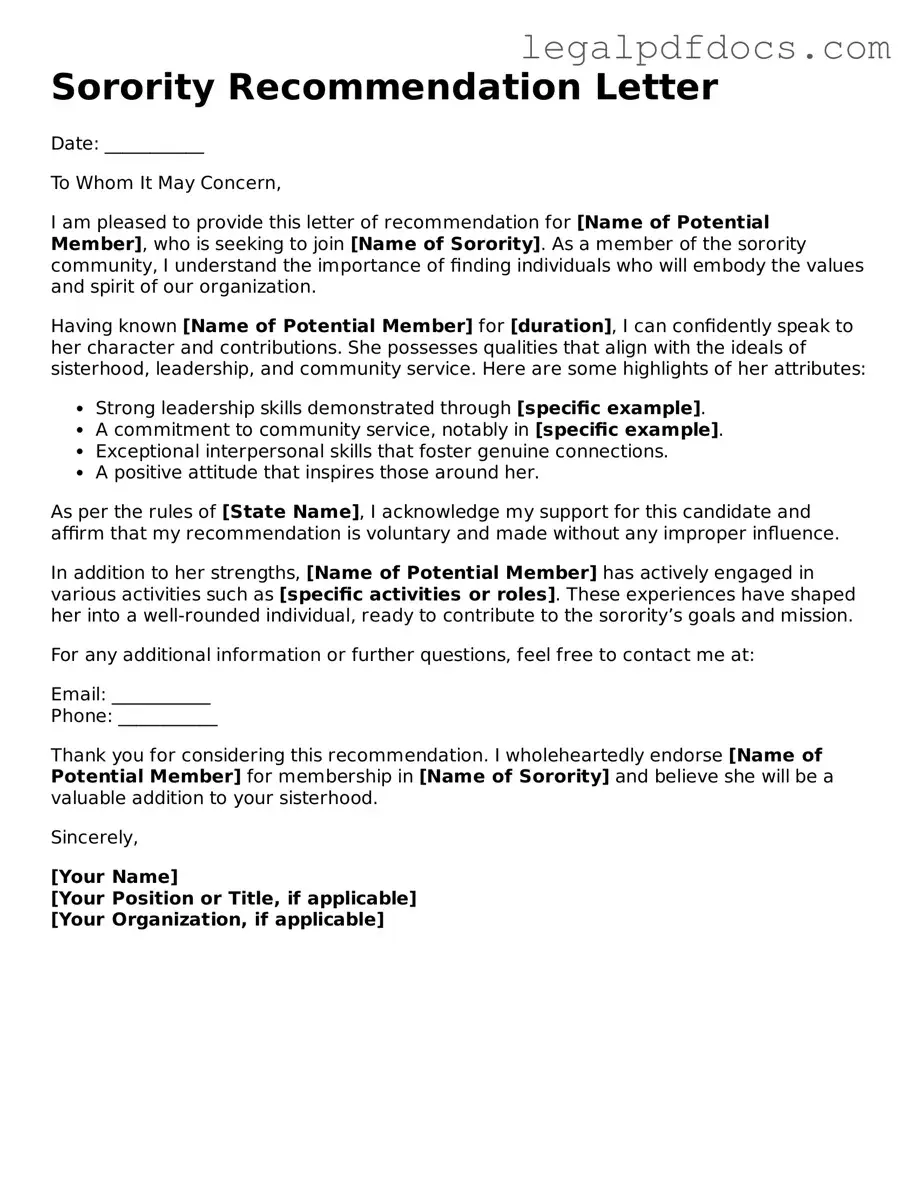Sorority Recommendation Letter Template
The Sorority Recommendation Letter form is a crucial document that helps potential new members secure a place in a sorority by providing insights into their character and achievements. This form is often completed by alumnae or current members who can vouch for the candidate's suitability for membership. If you’re ready to take the next step in your sorority journey, fill out the form by clicking the button below.
Open Sorority Recommendation Letter Editor Here
